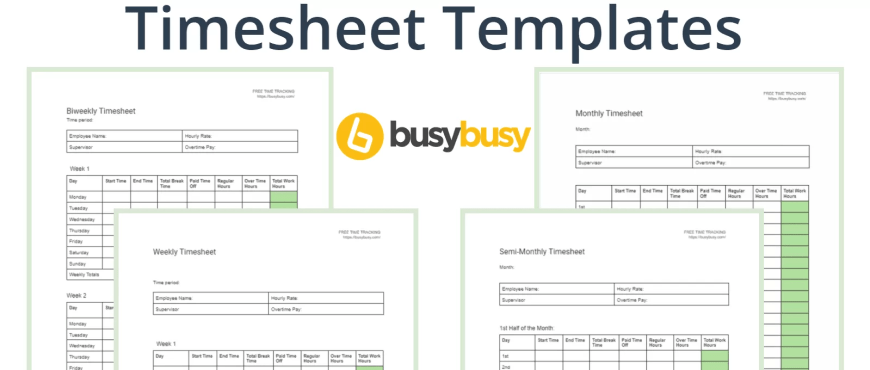
If you’re an employer, it’s important to understand how to calculate paid time off and vacation accrual. Don’t be scared when you see PTO accrual ever again! We’ll address the different types of paid time, how vacation accrual works, and you will be able to calculate and track employees’ time off by the end of this post! We will also provide great pointers on how to create a successful paid time off policy. Since the United States is one of the few countries in the world that does not require employers to give paid vacation time, providing or improving a paid time off policy will help employers be at the forefront of recruiting the next generation workforce.
What is Classified as Paid Time Off?
Paid time off, also referred to as PTO, is paid days employees have off that they can use at their discretion. PTO can be used for vacation, sick days, personal days, etc… Employers used to offer sick time and vacation separately in the past. Now, it’s intended to assist you to avoid developing unprofessional connections by taking days off. The number of days/hours of PTO depends on the company. There are a couple of different types of PTO; let’s discuss which option works best for you and your company.
Different Types of PTO
Vacation Accrual
Vacation Accrual means that vacation time is earned by the employee as they work. For example, if an employer offers two weeks of paid vacation per year, then an employee who works full time will earn one week after 6 months of employment. Any time you go over the number of paid leave program days, the employee simply doesn’t get paid that day, also known as unpaid time off.
Pros of Vacation Accrual
- This policy gives great incentives to work hard and put in extra hours when needed.
- This shows that the employee is loyal, and by rewarding the employee with PTO, the company shows they believe in and recognize hardworking, dedicated employees.
- An employee is more likely to take time when they need it because they don’t want to waste what they earned.
- Accrued PTO often boosts employees’ confidence and loyalty, knowing they reached a milestone in the company.
Cons of Vacation Accrual
- Employers might need to offer sick days separately. 6 months is a long time for no earned days off!
- If the employee has to work 6 months before seeing any paid time off, you can lose them to companies who receive time right away.
Front Load PTO
A front-load policy means you get your set days off at the beginning of the year and you can use them almost whenever you want. An exception would be some types of shift work. If an employee has to be on duty at all times, all of the employees can’t take the time off at the same time. Hopefully, you and your co-workers have created a good company culture together. Each employee handbook has different PTO policies.
Pros of front-load PTO
- Employees can plan vacations in advance.
- Sets everyone up for better, upfront communication. If you know you’re planning a trip sometime in the summer, you can already let your boss know and update them when dates get finalized.
Cons of Front-load PTO
- known to cause excessive trips planned at the beginning of the year, leading to having no days the last couple of months.
- If you hire an employee in December and they get an entire year’s worth of front-loaded PTO, they could use it all by March and then quit or get fired.
Unlimited PTO
Some employers offer unlimited paid time off. Employees are permitted to take as much unpaid time off as they need, so long as it does not interfere with their ability to do their tasks.
Pros of Unlimited PTO
- No pressure to come to work when you’re sick.
- Reduces HR tracking
- Increased productivity. Some companies who offer unlimited PTO have reported that their employees work harder when they are at work because employees are happier and have extra incentive to make the most out of their time at work.
Cons of Unlimited PTO
- Fear of overuse and potential abuse.
- Increased workload for co-workers if it becomes a habit.
Which employees earn PTO
Paid time off is typically given to full-time employees, but some employers also offer it to part-time employees who log more than 30 hours a week.
Calculating Days/Hours left for Front-End Load Policy
If an employer gives you a set amount of days off, easily convert it to hours by using this formula:
(days provided x hours worked in a day)= hours received off
Example: Employee gets 15 days off, an average workday is 8 hours
(15×8)= 120 hours.
If its April, and you’re wondering how much paid time off you still have and your employer says 40 hours left you can easily convert it into days by:
hours left/hours worked in an average day
40/8=5
You have 5 Days left!
Calculating Days/Hours Earned in a Vacation Accrual Policy
Determine the accrual cycle or pay period.
A pay period is a frequency at which a company pays its employees. The most popular payment periods are weekly, biweekly, and monthly. In a weekly pay period, there are 52 pay periods; in biweekly pay periods, there are 26; and 12 in monthly payments.
Calculate Hourly PTO accrual
Hourly PTO rate = total number of PTO hours in a year/number of pay periods.
For example: if given 15 days or 120 hours of PTO, and the total number of hours worked in a year is 2080, the hourly accrual rate can be found by dividing:
hours accrued per period= (120/2080)
.06 hourly rate
This means, for every hour an employee works, they have earned .06 hours of paid vacation time.
Calculate Weekly, Bi-Weekly, and Monthly Accrual Rate:
Weekly Accrual Rate: (120/52)= 2.3 hours earned every week worked
Bi-Week Accrual Rate: (120/26)=4.6 hours earned for every two weeks worked
Monthly Accrual Rate: (120/12)=9.2 hours earned for every month worked.
Tracking PTO
Employers should keep track of their employees’ PTO accrual and use. This can be done manually or through an automated system. If done manually, employers should keep track of the hours or days each employee has worked and add them to a running total. Alternatively, if using an automated system, most systems will automatically calculate and update the hours/days an employee has left.
Top-of-the-line time tracking apps have been developed to make adding/tracking paid time off quick and simple. If your company hasn’t made the switch to mobile time tracking yet, these custom printable timesheet templates could be a better option for tracking time than your current timesheet.
What happens to Unused PTO Time/ Leftover PTO
What happens to unused PTO depends on the employer’s policy. Some employers allow employees to carry over their unused PTO to the following year, while others do not. Some employers also offer a cash-out option for employees who have accrued PTO but do not plan on using it. This allows employees to receive payment for their unused PTO.
How much PTO is required by law?

There is no federal law that requires employers to provide paid vacation time, but many states have their own laws. This website has made it easy to find your local PTO law. Companies want to be competitive, they hire with benefits, health insurance, and paid time off. It has been shown to enhance employee wellness, morale, and the overall health of the company workspace.
3 Tips for a Successful PTO Policy
There are a few things to keep in mind when developing a PTO accrual policy to ensure it is successful.
- Consider the needs of your business and employees. What works for one company may not work for another.
- Communicate the policy clearly to all employees. This will help avoid any confusion or misunderstandings.
- Review the policy regularly and make changes as needed. By following these tips, you can develop a PTO accrual policy that works best for your company.
PTO Conclusion
Paid time off is a benefit that is greatly valued by employees. The construction industry is suffering to hire employees. By offering PTO, employers remain competitive to attract top talent. When developing a PTO policy, it is important to consider the needs of both the employer and the employee. Be sure to communicate the policy clearly and review it regularly to ensure it meets the needs of the company. Following these tips will help you develop a successful PTO policy.











